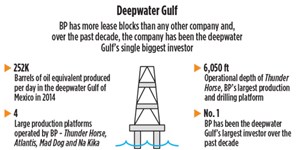What's new in exploration
The problem with driving while looking in the rear-view mirror is that when the road changes, or something appears in the road, expected or not, you tend to react poorly and not have the appropriate correction within an adequate timeframe. Having a smart computer driving for you, so far, does not seem to be any significant improvement, especially if it is you in the driver’s seat.
Similarly, I find our exploration industry repeating some of our past, rather inept practices. Such moves resulted in marginal results then (1986, 1992, 1996, etc…), so why should they work now? It is no surprise, that talent is reported “missing,” while the industry believes it should focus on the YP or STEM. Who is training newbies? Salary surveys clearly show that experience is valued, and is actually being paid to the over-20-year-experienced crowd (see AAPG Explorer, June 2016, p. 6). In fact, 20 years of other people’s money will earn you more than double the 0-5-year group.
The reason is obvious. The 20+ people loved geoscience enough to suffer needed math, chemistry and physics courses, and layoffs. The over-25+ talent pool is leaving to early retirement, teaching, government, environment, water (as in source and disposal), and starting their own consulting businesses, starting their own small oil companies, or just taking their project talent to others, such as an acquaintance, who went to manage a Christian Brothers Automotive outlet—really!
Scientists and engineers, still working in operating companies or consulting, are focusing on solving today’s issues. I notice that, while the rig count is down, there is still a rig count. It’s a great time to buy a rig. Activity continues West of Shetland, and in Morocco, the North Sea, and even Venezuela. It’s a great time to find new acreage, cheaply. Investors who think that “U.S. production surpasses Saudi output” means much to consumers are missing the point. Profit comes from what’s available, not total worldwide hydrocarbon supply, plagued by the indefinable politics of environmentalism, religion, geography, globalism, and a dozen other “isms.”
Issues today, involving exploration technology, zoom right in to residual oil zones everywhere, in every existing field. Booked reserves and your return on investment are just numbers that were never correct. Even the SEC acknowledges this problem. Think of all the tens-of-thousands of miles of seafloor pipelines out there, many more than 20 years old. BSEE says some leak. Should we repair them? Are there alternatives? Okay, but how to find them first? Can you redeploy some assets to smaller satellite reserves economically? Should you refresh that old seismic? Reprocessing is less than half the cost of last year, and has a faster turn-around. Should you shoot some new seismic? Dig out that old hammer, clean it, maybe grind it a bit into a new shape, maybe a bit smaller, lighter, and see what that new-old tool can do!
In an earlier WO issue, I mentioned robot land seis “juggies.” You know, I think auto-pick on a workstation is a poor substitute for interpretation judgement. But, I am open to using tried or new technologies with newer “eyes.” Look at this from CGG—this is not a commercial, but I have to recognize an effort at improving technology on existing investments to add value to a program. A brief clip from the service company’s website:
“View this short video and see images from CGG’s patented StagSeis technology. Matt Bognar, senior V.P. of Multi-Client New Ventures, discusses the single, most cost-effective risk-reduction tool for offshore exploration. CGG’s collaboration with clients produced staggering improvements in images of complex subsalt geology. Massive clarity and detail were achieved with ultra-long offsets, full azimuth, and BroadSeis technology for extra bandwidth. Download the white paper for full details about this innovative and essential tool to de-risk offshore subsalt prospects in the Gulf of Mexico.”
That’s “Bold talk for a one-eyed…,” but it just may indicate a direction that will not only think past survival, but point to where actual improvements in images could result in more accurate calibrations to reservoir characteristics.
Or, view this new-old approach from a major operator:
“BP has more…#1…” If you are a bull, then continue to be a bull. What company in the history of our industry, not fully nationalized, has taken a bigger hit than this one? Especially since that hit was related directly to exploration (Macondo, 2010). Remember Mukluk in Alaska, 1982? It cost $1 billion to $3.5 billion for a dry hole. Those folks know how to “dry hole” in a big way. Yet, they also know persistence. That attitude has paid the bills, and paid shareholders, for decades. Sometimes “never give up, never surrender” is a technical strategy. ![]()

- Applying ultra-deep LWD resistivity technology successfully in a SAGD operation (May 2019)
- Adoption of wireless intelligent completions advances (May 2019)
- Majors double down as takeaway crunch eases (April 2019)
- What’s new in well logging and formation evaluation (April 2019)
- Qualification of a 20,000-psi subsea BOP: A collaborative approach (February 2019)
- ConocoPhillips’ Greg Leveille sees rapid trajectory of technical advancement continuing (February 2019)



